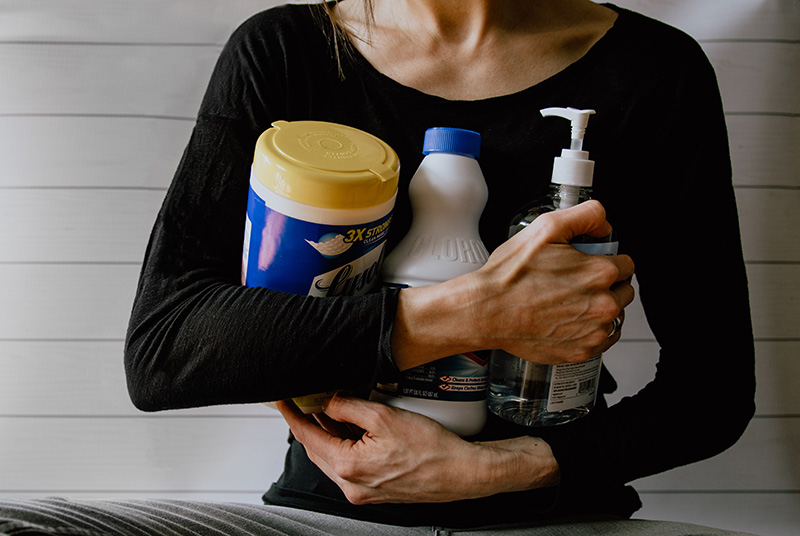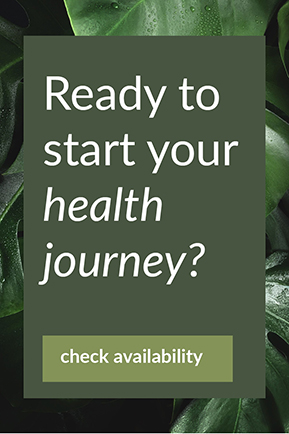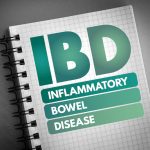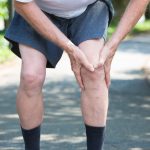Many of the health conditions thrown at women over their lifetime are hormone-related, with estrogen dominance being a stand-out contributor.
Before explaining estrogen dominance in more detail, let’s dive straight in and list some of the common hormonal health conditions related to an excess of estrogen that may be part of your journey from teenager to menopausal woman.
Conditions Related to Estrogen Dominance
- Premenstrual syndrome (PMS): mostly striking a week or two before your period with common symptoms including a change in your emotions, depression, mood swings, irritability, acne, fatigue, fluid retention, sore breasts, headaches, and food cravings.
- Acne
- Fibrocystic breasts
- Endometriosis
- Adenomyosis
- PCOS (Polycystic Ovarian Syndrome)
- Fibroids
- Uterine Polyps
- Menorrhagia (heavy periods)
- Infertility or problems conceiving
- Amenorrhea (absence of periods)
- Dysmenorrhea (painful periods)
- More intense and unpleasant symptoms in the menopausal transition: anxiety & mood swings, fatigue, irritability, slow metabolism, irregular periods, low libido, weight gain, water retention, insomnia, breast tenderness, increased risk of uterine fibroids, ovarian cysts, breast cancer
- Hypothyroidism: yes, estrogen dominance reduces the free thyroid hormone in your body
As you can see, there are many frustrating hormonal health conditions that are caused, made worse and continued due to too much estrogen in your body.

What is Estrogen Dominance?
Whilst this is a complicated topic, a simple way to explain is that estrogen and progesterone really need to be balanced for normal hormonal function to occur. Just like a recipe that needs balanced ingredients for the perfect cake, too much of one ingredient can make the cake a disaster. Similarly, when estrogen levels increase too much, havoc is created in many areas of the body and a long list of health issues can result.
How can you become estrogen dominant?
Daily use of personal care products
Xeno-estrogens are in your perfumes, make-up, shampoo & conditioner, hairsprays, toothpaste, skincare, soaps, body washes, hair dyes and nail-polish. When these xeno-estrogen chemicals enter your body, they mimic your estrogen hormone and your overall estrogen levels rise.
Ingredients to avoid include mineral oil, also called paraffin which is a by-product of the distillation process to produce gasoline; phthalates; PEGS (plyethylene glycol); sodium lauryl sulfate and sodium Laureth sulfate; parabens (methyl, butyl, propyl and ethyl); silicone; formaldehyde. If “fragrance” is listed as an ingredient, then I would recommend you look for “essential oils” and natural plant-based ingredients as an alternative. Gone are the days when essential oils make you smell like a hippy. Be conscious of the fact that what you put on your skin is absorbed into your body. Would you eat a by-product of gasoline? If the answer is no, then do not put it on your skin. Choose natural or organic.
But don’t panic as there are some beautiful and affordable products available and some amazing local brands if you do a little research. You would never know that the perfume, make-up, deodorant and skincare I use have none of these toxic, estrogen raising chemicals. Find an organic hairdresser who only uses organic, non-toxic products especially if you are planning a baby or are pregnant!

Household cleaning products
So many that sit on our supermarket shelves contain xenoestrogens. Day-in & day-out, simply washing your dishes, using laundry detergents and fabric softeners are all exposing your skin to these hormone un-balancing chemicals.
Cleaning sprays, air-fresheners and insect sprays all fit into this category too. The beauty is that our supermarkets are offering several ranges of more natural choices which are not expensive. Tea tree oil, baking soda and vinegar are also great options.

Avoid anything plastic
Say no to plastic in your home unless it specifies more safety such as BPA free. Use glass or ceramic to store your food and buy degradable & BPA free cling wrap. Never buy water in plastic containers; always glass, or carry your own non-plastic water bottle with you.
Buy BPA free canned food
BPA is a chemical that is toxic and disrupts hormones, released from cans and other containers. Food can sit in cans for many months so avoid if not BPA free.
Buy hormone-free or organic animal products
Unfortunately, the use of growth hormones allowed in Australia increases the weight of meat and poultry so they look bigger and better. This also applies to eggs and dairy. Sadly, they do the same to you. Supermarkets, online and local markets all supply healthier options such as organic, grass-fed meat. Also opt for organic, sustainable fish as conventionally farmed fish are full of chemicals, hormones, and antibiotics. Look for “wild-caught”.
Choose organic fruit and vegetables
Most conventional produce is sprayed with pesticides which are powerful endocrine disruptors. This is especially important for thin skinned fruit and vegetables. Always wash before cooking and eating, peel non-organic produce and buy locally grown and “in season” produce.

Chronic stress
When you are chronically stressed, which is incredibly common in the current world we live in, the production of your sex hormones is thrown out of whack. This is caused by several factors including excess cortisol (“fight or flight hormone”) that is made at the expense of other important sex hormones, blood sugar imbalance and digestion consequences. These all contribute to estrogen dominance if stress is not managed.
Imbalanced Gut bacteria
A healthy gut has a rich and diverse ecosystem of trillions of bacteria, fungi and other micro-organisms currently living within the digestive tract. These are called the gut microbiome or as I like to describe them – “your microbiome family”. The “estrobolome” are specific bacteria which are part of your total microbiome, critical for metabolizing estrogen.
This means they are involved in eliminating additional estrogen from your body. When out of balance, extra estrogen is re-absorbed back into your body rather than excreted in your stools. Good liver function is also a big part of this as your liver has to process every single chemical that enters your body and it can become overloaded. For more about this topic, refer to my blog on feeding and nourishing your microbiome.
Summary
This blog could go on and on. As it is, it is my longest blog yet due to my passion on this subject.
Obesity and certain contraceptive pills also contribute to estrogen dominance, disrupting your delicate hormonal balance. What is clear is that scientific evidence continues to prove that too many man-made substances that touch your skin and enter your body can be very dangerous for hormone-related issues and when combined with daily stress and a poor diet, a range of conditions can appear.
If you are a female who suffers from any of the conditions discussed in this blog, reducing estrogen dominance in your life cannot be stressed enough. And being male doesn’t exclude you either with estrogen dominance linked to an increased risk of certain prostate conditions, male breast growth, erectile dysfunction and more.
Whilst I use several herbal medicines and supplements to normalise hormones for both males and females, my advice in this blog is always the first priority.
If you would like more personalised information, please book a consultation with me.
References
Baker, J. M., Al-Nakkash, L., & Herbst-Kralovetz, M. M. (2017). Estrogen-gut microbiome axis: Physiological and clinical implications. Maturitas, 103, 45–53. https://doi.org/10.1016/j.maturitas.2017.06.025
Bosland M. C. (2005). The role of estrogens in prostate carcinogenesis: a rationale for chemoprevention. Reviews in urology, 7 Suppl 3(Suppl 3), S4–S10.
Chen, K. L., & Madak-Erdogan, Z. (2016). Estrogen and Microbiota Crosstalk: Should We Pay Attention?. Trends in endocrinology and metabolism: TEM, 27(11), 752–755. https://doi.org/10.1016/j.tem.2016.08.001
De Coster, S., & van Larebeke, N. (2012). Endocrine-disrupting chemicals: associated disorders and mechanisms of action. Journal of environmental and public health, 2012, 713696. https://doi.org/10.1155/2012/713696
Mnif, W., Hassine, A. I., Bouaziz, A., Bartegi, A., Thomas, O., & Roig, B. (2011). Effect of endocrine disruptor pesticides: a review. International journal of environmental research and public health, 8(6), 2265–2303. https://doi.org/10.3390/ijerph8062265
Watson, C. S., Hu, G., & Paulucci-Holthauzen, A. A. (2014). Rapid actions of xenoestrogens disrupt normal estrogenic signaling. Steroids, 81, 36–42. https://doi.org/10.1016/j.steroids.2013.11.006










